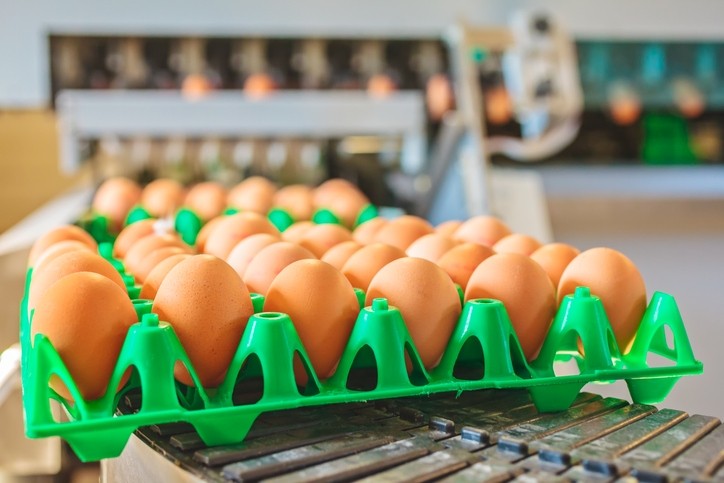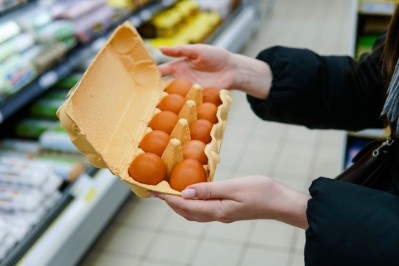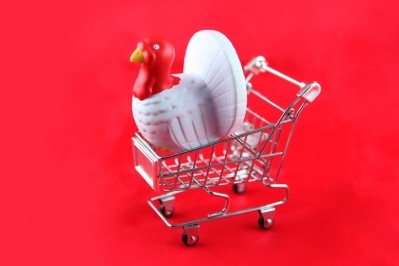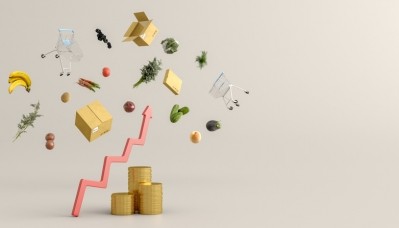Egg prices soar, supplies could tighten as war, cage-free transition and Avian flu take toll

At the same time, CPG companies hoping to manage costs by replacing eggs with less expensive ingredients as they did during the 2015 Avian flu outbreak may be out of luck as Russia’s invasion of Ukraine is simultaneously constraining supply of go-to alternatives, making them just as expensive, if not more, as eggs, Cal-Maine Foods CEO Dolph Baker and CFO Max Bowman told investors at BMO Capital Markets’ Global Farm to Market conference this week.
As the #1 shell egg producer and distributor in the US with about 19% of the shell egg market and 13% share of the US table egg layer flock, Cal-Maine so far has dodged an Avian flu outbreak at its facilities, and has sufficient supply to meet customer demands, Baker said.
But other producers have not been so lucky, he said, noting USDA reported that about 37.8m US birds have been impacted by the Highly Pathogenic Avian Flu this year as of May 14. This includes about 28.8 million, or 8.9% of table egg layer hens that have been depopulated based on February 2022 layer hen levels, 830,000 or 0.7% of pullet flock numbers that have been depopulated and the destruction of about 90,000 breeder flock birds.
This is compared to the 2015 outbreak, which took about 35m birds or 11% of the flock, which Baker described as “devastating.”
Still, Cal-Maine has avoided losses so far because when it became aware of the threat of spread in the US, it called in more than 150 people to ensure biosecurity measures were in place, and because most of the infections have been in the Midwest, not the South where its facilities are primarily located.
Rebuilding supply could take more time
While the impact of this outbreak may not be as severe as 2015, the industry may be slower to bounce back in part because of mounting pressure to transition to cage-free operations, Baker said.
“Speaking to some of the breeders, one in particular said that they did not have the same availability of hatching eggs at this time as they had in 2015. With the transition to cage-free, I don’t think people are ready to repopulate their current stock rates knowing that they are going to have to remodel their houses for cage-free,” he explained.
He also noted that the expense of converting to cage-free is too much for some family-owned businesses, prompting them to consider exiting or downsizing rather than ramping up to meet demand.
“In the last year, the economics of the egg industry – actually the last four years – have been poor, and we are getting calls from companies that would like to explore acquisition opportunities,” Baker said.
But, he added, “the problem is that a lot of these companies don’t have cage-free production. And so we can either spend our capital on our current conversions, or try to buy these companies and have to spend our capital to convert them.”
Baker said that Cal-Maine is prioritizing converting its own business to meet rising demand for cage-free, commitments for which by retailers and in states that require cage-free as of April 2022 require about 66.7 billion cage free eggs per year.
As part of Cal-Maine’s strategy to meet demand, Bowman said, the company has earmarked about $625m to expand its cage-free capabilities and has spent about $500m as of the end of its third quarter.
“It has been a big commitment,” he said. But, he added, it is also a big opportunity with about 23% of fiscal year 2022 total net shell egg sales tied to cage-free egg sales and revenue expected to pace with cage-free uptake.
Reformulating without eggs to lower prices may not be as affordable
The Avian flu outbreak, and subsequent supply constraint comes at a time when demand for eggs, both by businesses and consumers, is on the rise – as is their price, Bowman said.
He explained that demand for eggs in the US has steadily increased following a shift in understanding about their impact on health and the recognition by the USDA Dietary Guidelines for Americans in 2020 that eggs can be part of a healthy diet.
So far, demand is not waning even as prices in the second quarter reached historic highs experienced during the heavy demand spike in March 2020 due to a pandemic-fueled pantry stocking, Bowman said.
“I think there’s a couple of reasons for that,” he explained. “One being that eggs compared to other proteins are still on the low-end of the spectrum for the consumer so they buy eggs versus beef or chicken or pork.”
Volume also is holding steady in the processing and manufacturing channels due indirectly to the war in Ukraine, which is restricting supply and driving up prices for ingredients that manufacturers used during the 2015 Avian Flu outbreak to reformulate with eggs.
“In 2015, people began to manufacture without eggs. They took eggs out of their formulas and they used vegetables to replace them. That sees less likely this cycle because the vegetables that would be the natural replacements for eggs are scarce and expensive as well,” Bowman said. “So, the situation sets up a little differently at this point and demand is still good.”

















